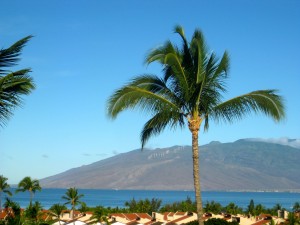It’s the ultimate Hawaii dream house – right on the beach, the sound of waves lapping along the shoreline and the evening breezes blowing across the lanai as an orange sun dips below the horizon. However, there’s a lot more to owning beachfront property in Hawaii than what you see in Conde Nast or any of those other magazines. It’s not all postcard glamour – there are some serious issues that you must know about if you want to buy a house on the Hawaii shoreline. I’m going to start off with some scientific and practical matters first:
1. Coastal Erosion and Global Sea Level Rise. There’s no doubt about it, sea levels are rising in most of the world (there are exceptions). While the rates of the IPCC GCMs (Intergovernmental Panel on Climate Change’s global climate models) differ, the consensus is uniform. This is a result of both greater freshwater input from glacial runoff as well as thermal expansion of the oceans (warm water expands just like warm air). Some island nations are being lost completely, i.e. Maldives, Tuvalu. Hawaii is no different. Next time you drive along Kamehameha Highway in Hau’ula, look how close the waters come up on the seawall. That’s coastal erosion in action. How would you want to be one of those homeowners? How soon until Kam Highway is overrun completely?
2. Coastal Hazards. I will cover this topic in more detail at a later date as it’s a subject worthy of its own post, but it should be no surprise that coastal properties in Hawaii are more susceptible to natural hazards such as tsunamis, hurricanes and storm surge. No way around it — it’s a risk you willingly take. I’ll talk about ways to minimize vulnerability to these hazards another day.
3. Sea Spray. People often forget about this, but years and years of sea spray can be damaging to the structure of your house if not controlled. Salt has a way of eroding paint and other materials over time. You need to decide if it’s worth the extra maintenance.
Those are just a few of the practical matters. However, there are some legal issues that you most definitely should be aware of before putting down an earnest money deposit on that nice Aina Haina 4-bedroom house.
1. Understand Shoreline Setbacks. Setbacks are legal buffers that define where on your property your are allowed to perform any kind of construction, whether it’s a new house or an addition. The setbacks are situated from the certified shoreline boundary line of your property — usually defined as the vegetation line — and going mauka some distance. The rules governing the extent of the setbacks vary between islands. Oahu’s setback is only 40ft in most places. At an average shoreline retreat of 1ft/year statewide according to The University of Hawaii’s Sea Grant program, that doesn’t leave a long lifespan for many homes that are right up against the setback. Maui and Kauai use variable setback formulas that take into account the specific erosion rates at each location (derived from UH research) and adjust the setback accordingly. Maui’s setback formula is 50 times the annual historical erosion rate plus an extra 20ft buffer. Kauai went one step further and uses 70 times the annual historical erosion rate plus a 40ft buffer. These are, in my opinion, much more proactive approaches that recognize the inevitable coastal future facing Hawaii. I have my doubts, but I hope the folks in charge in Oahu follow suit. It won’t be easy, but the most necessary tasks in life never are.
2. Shoreline Hardening. It is generally not an option to construct a seawall, revetment, pier, jetty or groin (“hardening or shoreline stabilization structures”) on your property. First and foremost, it’s illegal to do so without a permit, but even obtaining a permit can be a timely and costly process with an unlikelihood of success. I personally know many of the people in various government roles here, and I can say they are always reluctant to condone shoreline hardening. You must show a house in a severe state of hardship and threat from rising seas to even be considered. Personally, I agree with them. It is well documented in scientific literature from here to North Carolina that hardening structures generally are bad for coastal systems. Seawalls are notorious for actually causing a beach to disappear entirely. There’s evidence of that all around Oahu. When you construct a seawall, you are generally giving up the beach to save the house — rarely can you have it both ways. More so, continuous wave action over time undercuts a seawalls and causes it to collapse without maintenance — expensive maintenance! Additionally, seawalls interfere with the natural movement of sand called “longshore sediment transport”. In a nutshell, that means that your seawall is going to interfere with the beach fronting your neighbor’s house.
These are just a few of the issues you absolutely must take into consideration if you are interested in buying Hawaii beachfront property. By no means am I saying not to do it, but I want all of you to know what the risks are. You need to understand where you lie on the risk-reward spectrum. If you’re aware of the above matters and are willing to take on the necessary responsibilities yourself (instead of crying foul down the road), then go for it. However if you are buying for the long haul with an eye to both nature and government regulations, you may want to look at those properties a bit further inland. My personal recommendation, as a former coastal geographer, is to be conservative — enjoy the beach during the day but go to your safe, inland home at night.
What do you think?? Leave your comments below!
